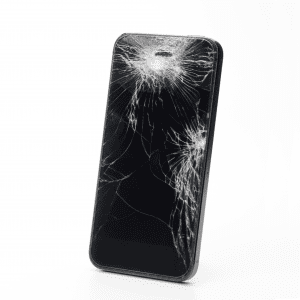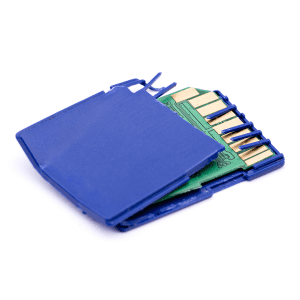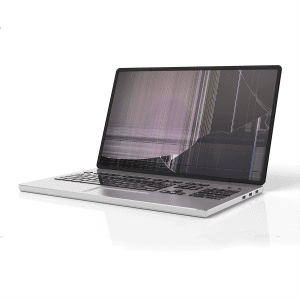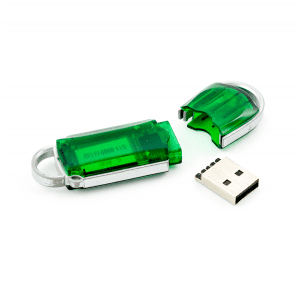RAID 10 SERVER RAID RECOVERY
RAID 10 Data Recovery Service from True Industry Experts
Your business can’t afford to lose its valuable data. You may use a Redundant Array of Inexpensive Disks (RAID) 10 system for data loss prevention. It’s also known as RAID 1 + 0 because it combines disk striping from RAID 0 and disk mirroring from RAID 1 for improved data protection.
BENEFITS OF RAID 10
RAID 10 has the fault tolerance of a RAID 1 and the speed of RAID 0. It requires at least four disks, and each one has a mirrored twin. For example, disk one and disk two might contain the same data written to both disks. Disks three and four would store duplicate sets of separate data. Data chunks can be written to and read from different disks at the same time. The main drawback for using RAID 10 is that only 50 percent of disk capacity is available since the array uses the other half for duplication.
Redundant Doesn’t Mean Foolproof
Many users confuse data duplication with backup, but it isn’t the same thing. If your operating system, software or users supply corrupt data, the bad information copies to both disks. Unless you have a separate backup system, there is no correct version stored anywhere else. Sometimes during an attempt at rebuilding, IT or technical support for the array actually make the situation worse. Unless your organization has a backup copy stored in a detached location, you will need a specialist to access data if more than two drives fail.
RAID 10 DATA RECOVERY
GET YOUR DATA RECOVERY STARTED
Just click the button below to contact a Customer Service Representative.
SPEAK WITH A REPRESENTATIVE NOW!
Why Drives Fail
Here are some of the most common reasons RAID 10 arrays fail:
- Hardware overheats because of poor ventilation.
- Impact, jarring or other forces damages drives.
- A power surge from lightning or power line activity that causes read/write head failure or a computer crash.
- Flooding or a liquid spill causes moisture to penetrate components.
- Incorrect shutdowns, power failures or new software can cause software corruption.
- Users may accidentally delete key files.
- Disks may experience software or firmware damage so they no longer network correctly with other systems.
In the Event of Failure
Array failure happens so infrequently it often catches IT departments and business owners off guard and threatens daily operations. IT staff feels everything technology is their responsibility and are often under pressure to get things back up and running very quickly. The best way to recover data if drives make strange sounds such as clicking, whining or squealing,, or if notification systems signal an error, is to power down equipment and contact a specialist.
If users accidentally deleted files or directories, reformatting the array can overwrite files needed for recovery. Fatal rebuilds occur when technicians force the RAID online and start a rebuild using the data that led to the initial problem.
Staff members can also make damage worse if they open the hard drive seal to investigate. Internal components are extremely sensitive to static electricity discharges too small for humans to detect and can easily be destroyed by dust.
HIRE THE EXPERTS IN RAID 10 DATA RECOVERY
Flashback Data has a data recovery lab with antistatic flooring, Class 100 clean room workstations and extensive security features. When you need data restored from any type of equipment, contact us for a free quote.
WE RECOVER DATA FROM ALL KINDS OF RAID CONFIGURATIONS INCLUDING //
RAID 0
RAID 0+1
RAID 1
RAID 5
RAID 6
RAID 50
NAS
SAN
HELP! WHAT DO I DO IF MY RAID SYSTEM DRIVES FAIL?
It depends on the RAID level and your knowledge of the system. If it is a complicated setup that you are unfamiliar with or feel uncomfortable at all, contact a data recovery RAID professional immediately, especially where critical information is involved. In the event of a single hard drive failure in a redundant RAID type where the data is still accessible, replace the failed drive with an exact spare and let it rebuild the array. If you have a second failure, or you have hot spares set up and you are unsure of the order of the drives, you will only make matters much worse or even unrecoverable if you try to replace or rebuild drives. Whatever you do, do not reinitialize your system if you are concerned for you data.
We have seen countless situations where staff that is not completely familiar with their systems, try to ‘fix’ the problem but only make it impossible to perform a RAID data recovery. In most of these situations, it would have been possible if they contacted a data recovery professional before trying to reinitialize.
Request a Call Back
REQUEST A CALL BACK
Your Name *
Phone Number *
Time to call
Time until
Comments *
CALL ME BACK
Call us to speak to a Customer Service Representative:
866.786.5700
WANT MORE INFO?
Our Process
Read about how our process works from your computer to our lab and back.
Risk Free Evaluations
Read about our No-Data, No-Fee Guarantee and get your media evaluated at no cost.
What We Recover
Learn about all of the types of media and system types we recovery from.
Our Lab
Read all about our accredited data recovery lab.
FAQ
Visit our frequently asked questions page.
Data loss is a serious problem, especially when critical server data is involved. Flashback Data is here to find the best solution to your problem. We pride ourselves on our customer support and we are happy to speak to you about your data loss situation. Please call us at 866.786.5700 or fill out the form here and someone will contact you shortly.





